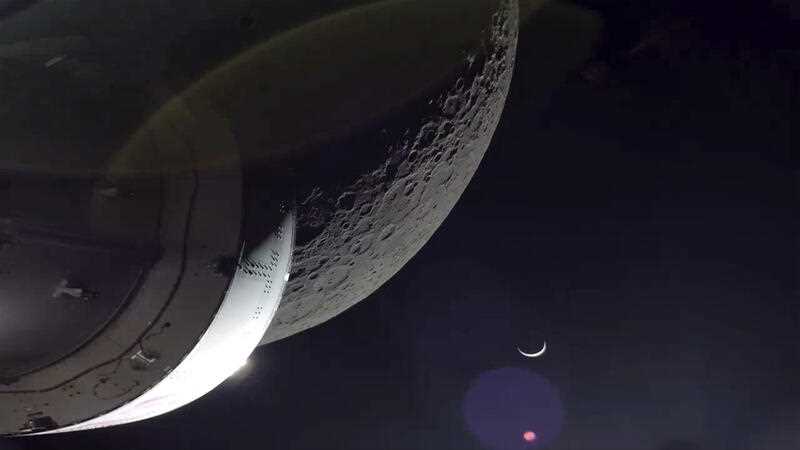NASA’s Orion capsule and its test dummies have swooped one last time around the moon, flying over a couple of Apollo landing sites before heading home.
Orion will aim for a Pacific splashdown on Sunday off the US west coast, setting the stage for astronauts on the next flight in a couple years.
The capsule passed within 130km of the far side of the moon, using the lunar gravity as a slingshot for the 380,000km ride back to Earth.
It spent a week in a wide, sweeping lunar orbit.
Once emerging from behind the moon and regaining communication with flight controllers in Houston, Orion beamed back photos of a close-up moon and a crescent earth – earthrise – in the distance.
“Orion now has its sights set on home,” said Mission Control commentator Sandra Jones.
The capsule also passed over the landing sites of Apollo 12 and 14.
But at 9600km up, it was too high to make out the descent stages of the lunar landers or anything else left behind by astronauts more than a half-century ago.
During a similar fly-over two weeks ago, it was too dark for pictures.
This time, it was daylight.
Deputy chief flight director Zebulon Scoville said nearby craters and other geologic features would be visible in any pictures but little else.
“It will be more of a tip of the hat and a historical nod to the past,” Scoville told reporters last week.
The three-week test flight has exceeded expectations so far, according to officials.
But the biggest challenge still lies ahead: hitting the atmosphere at more than 30 times the speed of sound and surviving the fiery re-entry.
Orion blasted off on November 16 on the debut flight of NASA’s most powerful rocket ever, the Space Launch System or SLS.
The next flight – as early as 2024 – will attempt to carry four astronauts around the moon.
The third mission, targeted for 2025, will feature the first lunar landing by astronauts since the Apollo moon program ended 50 years ago this month.
Apollo 17 rocketed away on December 7, 1972, from NASA‘s Kennedy Space Center, carrying Eugene Cernan, Harrison Schmitt and Ron Evans.
Cernan and Schmitt spent three days on the lunar surface, the longest stay of the Apollo era, while Evans orbited the moon.
Only Schmitt is still alive.



